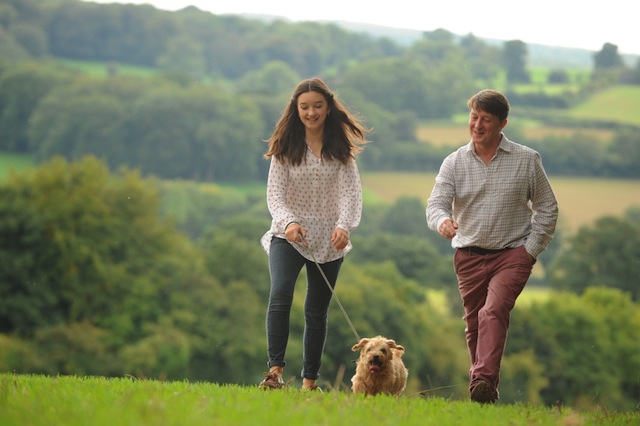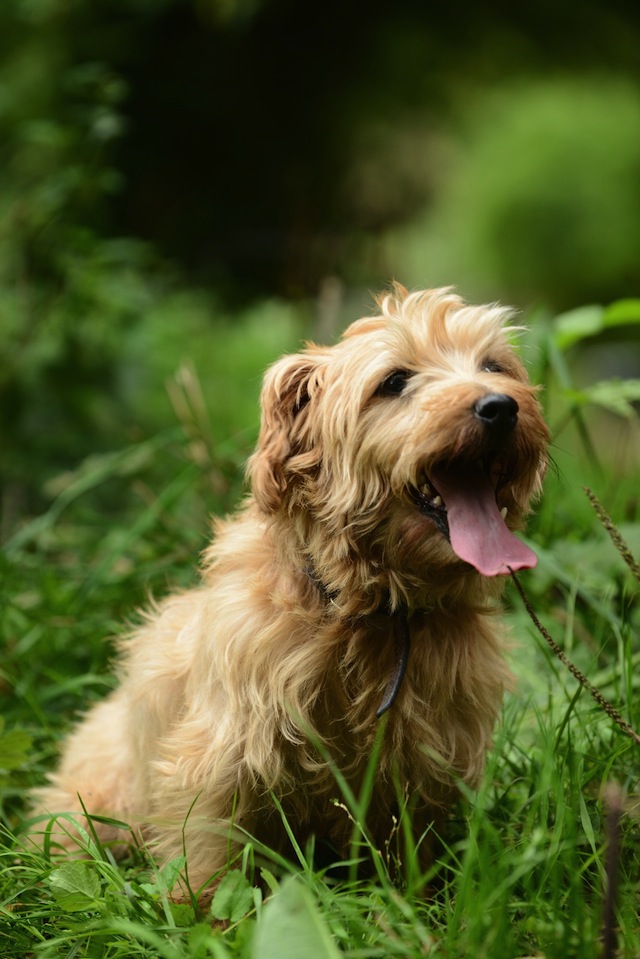Why we love the Lucas terrier
Country Life's Editor Mark Hedges reveals why he loves the Lucas terrier.


A wagging, bounding multitude of dogs have featured in Country Life over the years, from working cockers to pampered pugs. However, Editor Mark Hedges' heart will always belong to the Lucas terrier.
His love affair with the breed began when, as a boy, he pored over distinguished hunting man Sir Jocelyn Lucas's Hunt and Working Terriers (dedicated to ‘that grand little sportsman, the average hunt terrier'), enthralled by the tales of plucky dogs spending days at a time underground. Sir Jocelyn was writing about Sealyham terriers (Country Life, October 26, 2011), but, by the 1940s, he had decided that he wasn't keen on the direction in which the breed was going.
Concerned by the emergence of cumbersome traits such as heavy shoulders and heads in showing circles, he started looking for a smaller working terrier to mate with his Sealyham bitches. He alighted on the sturdy Norfolk terrier, and the resulting progeny-with the softer Sealyham coat and often the attractive Norfolk colouring-to which he gave his name, proved to be intelligent and sporting, with a winning temperament.
When, years later, Mr Hedges came across an actual Lucas terrier, he knew instantly that he had to have one.

‘Lucy, our first Lucas, grew up beside my daughter, Anna, and we would often find them asleep in the dog basket together. They're brilliant with children and yet, on a walk, they'll hurtle around killing everything.' Indeed, the dogs used to be referred to as ‘death to rats and rabbits'.
The Hedges family acquired Cracker, its present Lucas terrier, from a master at sons Harry and Charlie's school. ‘We went along to the Lucas Terrier Club's (LTC) annual dog show with her, which was quite unlike any other I've ever experienced. We were given a thumping great Bloody Mary on arrival and Cracker won the champion puppy prize. All in all, it was a very good day.'
It seems apt that Lucas terriers should have such a characterful show devoted to them. Although these sturdy little dogs are easily mistaken for Norfolk terriers or Sealyhams, they have a special appeal all of their own. The breed has never been registered with the Kennel Club, but determined champions, such as current LTC chairman Jo Rodwell and her husband, Simon, continue to fight tooth and nail to protect it today.
Sign up for the Country Life Newsletter
Exquisite houses, the beauty of Nature, and how to get the most from your life, straight to your inbox.
The breed has always attracted colourful types, not least, Sir Jocelyn himself, who became a Hollywood star by proxy when his Sealyham pack featured in the 1937 film Storm in a Teacup with Vivien Leigh and Rex Harrison. When he died in 1980, the baton was passed to his kennel manager, the Hon Enid Plummer, who closely guarded his ideals until her death in 1986. Anyone wishing to breed from their Lucas terriers was required to consult Mrs Plummer on a suitable mate, and as the bitches are notoriously difficult to get in pup, the lucky pair was then summoned to her kennels so that she could oversee the coupling.
Prior to her death, Mrs Plummer recruited a lady-in-waiting to Princess Michael of Kent, Jumbo Frost, to carry on the sterling work. Sadly, Miss Frost died in 2009, but her delightful account of the Lucases in her life has been published on the LTC website. Her first Lucas terrier, Badger, was a born adventurer, who sometimes travelled on horseback.
‘If I ever came upon a road that I had to use I would dismount, pick him up and, with some difficulty, remount with him flopped across the saddle,' she remembered. ‘When we reached the open fields he would jump off and gallop on-whatever my gait, he would try to be ahead of the horse and outpace him.'
A later Lucas, Mtoto (named after the racehorse), flew to the Isle of Man in the cockpit of Robert Sangster's private plane after Ascot for a rendez-vous with the family's Lucas bitch.
Miss Frost's younger brother, Thomas, is now president of the LTC and owner of two Lucases, Pebbles and Lara. ‘I'm amazed they're not more well-known,' he says simply. All of his Lucases came from his sister, including their dog of a lifetime, Oscar.
‘I can't tell you how special he was. Once, on New Year's Eve, after we arrived home from a party in the early hours of the morning, I went to let the dogs out, but he wouldn't leave the door that led into the sitting room, he kept jumping up and barking, which made me cross because I was desperate for bed. Eventually, I opened the door and discovered smoke pouring out of the wall next to the fireplace, which had recently been repaired.The cellar underneath was full of wood and the whole thing would have gone up like a tinderbox.'
He continues: ‘On another occasion, we were picnicking on some cliffs while the children paddled below. Oscar, thinking they might be in danger, began patrolling, but he got too close to the edge and fell off, crashing onto the granite shelf underneath. Fortunately, he lived to tell the tale.'
Another Lucas devotee, Annabel Whitehead, recalls her first encounter with the breed. ‘I went to visit a friend who was working with Jumbo Frost, and there was this enchanting dog under the desk,' she recalls. ‘I remember thinking "It's the right size, the right shape and it's not silly".'
The Whiteheads were warned that Lucases might not be ‘London dogs', which was, Mrs Whitehead says, ‘a black lie-they're just as happy living in a flat with two walks a day as being walked off their feet, and you can take them down escalators or on the bus.' Button and Snippet, her current Lucases, are the sixth and seventh that she's owned. Flurry, Thimble and Button all spent time under the desk at Kensington Palace in the days when Mrs Whitehead was lady-in-waiting to Princess Margaret, and Busy, the first, was ‘a real nursery dog. She would mark out a circle around my daughter's pram-God forbid anyone should enter it'.
Busy, in addition to her many other admirable qualities, had a robust sense of humour-a trait shared, according to Mrs Whitehead, by all Lucases. ‘Our daughter used to pull Busy's whiskers through the bars of the cot, but she never minded that. They're such honest little dogs, and they see the joke in things.'
This article was originally published on November 8, 2013. Updated on October 6, 2014.
Country Life is unlike any other magazine: the only glossy weekly on the newsstand and the only magazine that has been guest-edited by HRH The King not once, but twice. It is a celebration of modern rural life and all its diverse joys and pleasures — that was first published in Queen Victoria's Diamond Jubilee year. Our eclectic mixture of witty and informative content — from the most up-to-date property news and commentary and a coveted glimpse inside some of the UK's best houses and gardens, to gardening, the arts and interior design, written by experts in their field — still cannot be found in print or online, anywhere else.
-
 'There is nothing like it on this side of Arcadia': Hampshire's Grange Festival is making radical changes ahead of the 2025 country-house opera season
'There is nothing like it on this side of Arcadia': Hampshire's Grange Festival is making radical changes ahead of the 2025 country-house opera seasonBy Annunciata Elwes
-
 Jungle temples, pet snakes and the most expensive car in the world: Country Life Quiz of the Day, April 14, 2025
Jungle temples, pet snakes and the most expensive car in the world: Country Life Quiz of the Day, April 14, 2025Mondays's quiz tests your knowledge on English kings, astronomy and fashion.
By James Fisher